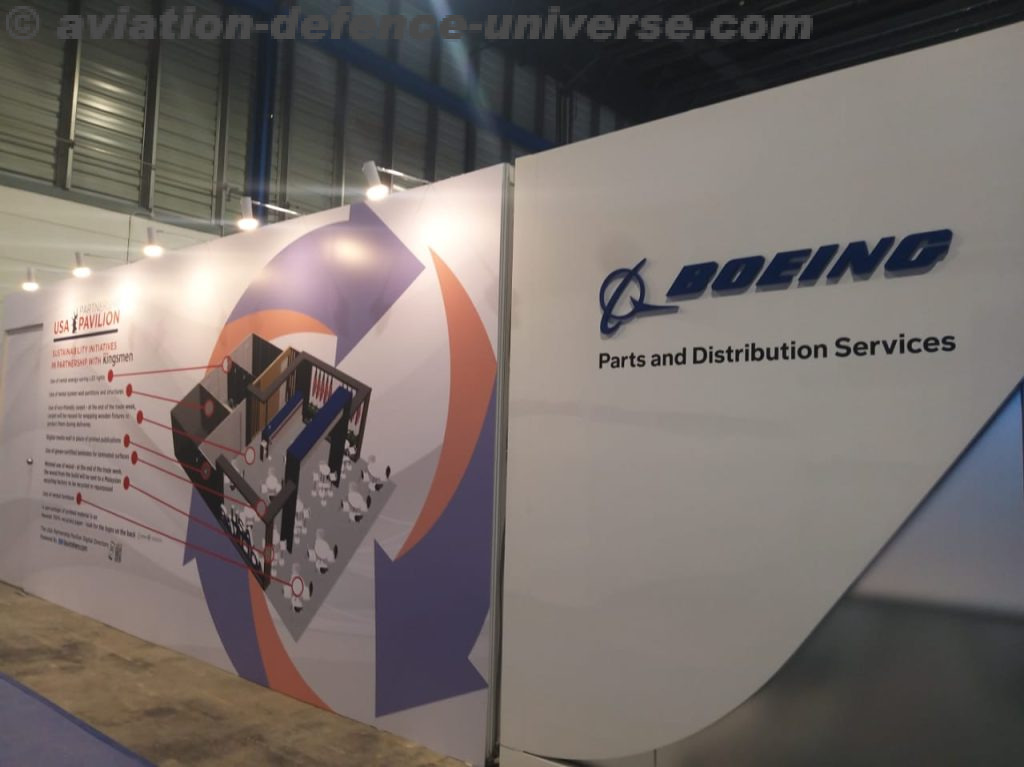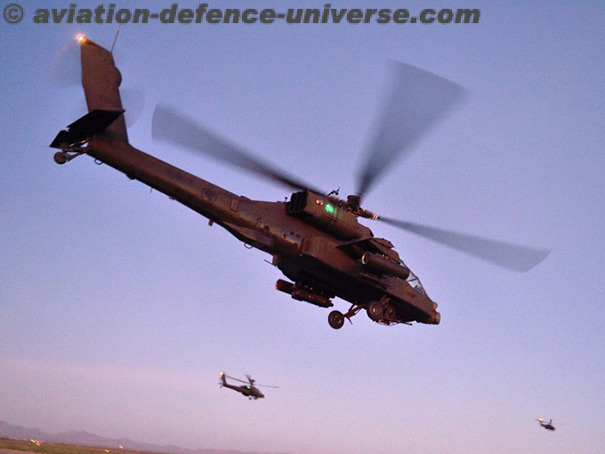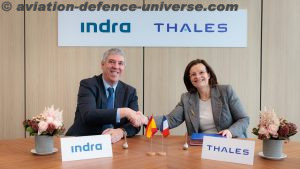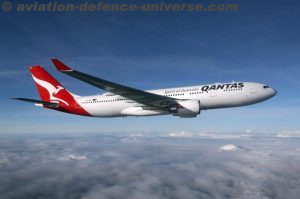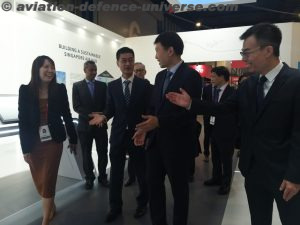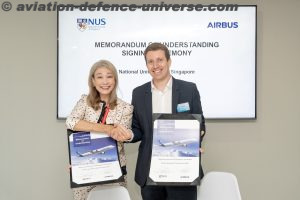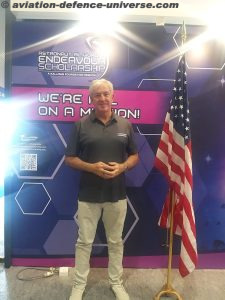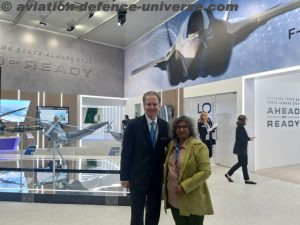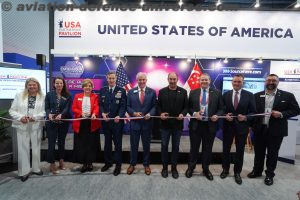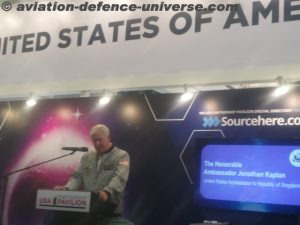By Sangeeta Saxena
Changi, Singapore. 22 February 2024. Boeing has its footprint strong in the Asia Pacific region, would not be an exaggeration. Ten plus years of supporting Korea’s F-15K through Performance Based Logistics, seven years contract to assist Australian MoD with sustaining future AH-64E fleet, extension of CH-47 Chinook Integrated Support Services contract for Down Under and establishing a data exchange infrastructure toenable collaborative data analysis for the Republic of Singapore AirforceF-15SG aircraft, make Boeing a partner of choice and a reliable one in the region.
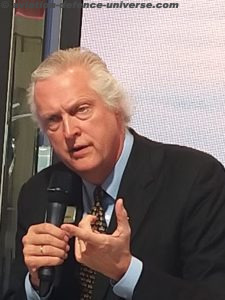 Torbjen “Turbo” Sjogren, VP and GM, Government Services, Boeing Global Services in a media briefing at the show reiterated that the company is able to provide its military clients with readiness, maintenance, and support analysis across fleets, right down to “individual tail numbers,” thanks to the most recent analytics and sophisticated big data tools.
Torbjen “Turbo” Sjogren, VP and GM, Government Services, Boeing Global Services in a media briefing at the show reiterated that the company is able to provide its military clients with readiness, maintenance, and support analysis across fleets, right down to “individual tail numbers,” thanks to the most recent analytics and sophisticated big data tools.
It may be recalled that for it’s commercial services Boeing and SIA Engineering Company (SIAEC) have formed a joint venture called Boeing Asia Pacific Aviation Services Pte Ltd, or “BAPAS.” The joint venture benefits from SIAEC’s vast maintenance experience and understanding of the engineering requirements of airlines, as well as Boeing’s original equipment manufacturer (OEM) expertise and cutting-edge e-enabling technology. For customers in Asia Pacific and beyond, BAPAS will provide a tailored, all-inclusive, and integrated suite of engineering, materials management, and fleet support solutions for Boeing 737, 747, 777, and 787 aircraft.
Getting back to our Boeing Global Services briefing according to Sjogren, a C-17 can generate 6,000 data points per second. By utilising advanced analytics, these data points can yield unprecedented levels of operational efficiency and readiness. In order to jointly share and analyse data from Singaporean F-15SGs, the company has already been working on a project with the RSAF and DSTA. This gives the airframer unparalleled transparency into problems that customers are experiencing with its aircraft.
He stated , “ the project has been a very significant opportunity between Boeing and Singapore in terms of how we can gain data so we can bring in some of those next-generation product support tools to ensure maintenance is more prescriptive and preventative. That has been a major motivator for our ongoing investments and performance-based contracts here.”
Adding to it he said, “the contractor and customer are able to work together as a combined enterprise and understand between them and us what are the readiness issues that we’re having thanks to the data-sharing agreement, which has allowed us to have a unique level of transparency between Boeing and Singapore. The Defence Science and Technology Agency and the Republic of Singapore Air Force have been great partners in that regard.”
Turbo stated that Boeing needs to think about how do we ensure that we are able to bring those modifications and those upgrades on board in a consistent and an affordable manner that doesn’t impact readiness, when it comes to possibly upgrading Singapore’s F-15SG fleet.
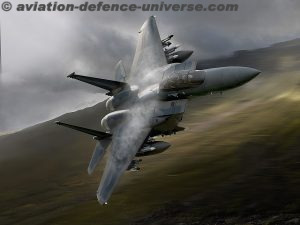 On a question about the current F-15 operators being able to upgrade to F-15 EX he said, “ capability of the advanced F-15EX variant is significant, and you can imagine those existing F-15 operators are eager to see how they will be able to avail themselves of that same capability. But this is a matter for government-to-government discussion between the United States and Singapore.”
On a question about the current F-15 operators being able to upgrade to F-15 EX he said, “ capability of the advanced F-15EX variant is significant, and you can imagine those existing F-15 operators are eager to see how they will be able to avail themselves of that same capability. But this is a matter for government-to-government discussion between the United States and Singapore.”
Boeing is testing autonomous aircraft inspection technology in collaboration with the U.S. Air Force and Pittsburgh-based small business Near Earth Autonomy. “The inspection can now be done in a fraction of the time without having to suspend maintainers six floors above the ground,” Sjogren said, using a drone to scan the exterior of an aircraft, like a C-17 transport plane.
“We are able to perform that examination more quickly, more precisely, and repeatedly,” he added. The next time that particular aircraft arrives, we can run the exact same track and perform a corollary on the digital printout from the first to the second time we performed the inspection because of the way the aircraft tracks and how we conduct that inspection. Thus, we are able to identify problems in a way that is occasionally invisible to the human eye. This makes it possible to conduct safer, more economical, and more accurate inspections, which enables “aircraft to get back out in terms of mission readiness better than we’ve ever done before.” Additionally “platform agnostic,” the autonomous inspection has also been tested on a C-5 manufactured by Lockheed Martin as well as a C-17 manufactured by Boeing.
The capability of the autonomous inspection technology to compare aircraft tail-by-tail is “possibly the most significant thing,” according to Sjogren, as it offers a “degree of insight we haven’t had before.” “You can customise solutions to that specific aircraft to an amazing extent by being able to do a tail-by-tail comparison,” which can then be applied “throughout the entire fleet.”
Working with cutting-edge businesses like Near Earth, “that can bring tremendous value to us,” is one of Boeing’s main priorities, he stated. It enables us to offer unique solutions if we can combine our size and their inventiveness.
“Even in Singapore, there are many companies that are developing these new technologies; some of them we already have financial relationships with, and to the extent we can scale them, those provide us tremendous insight and opportunity,” the Turbo stated.
Boeing’s partnership with Singapore-based ST Engineering is one instance of this. In order to find ways to work together on systems integration, training, local parts distribution, support, and maintenance of Boeing’s P-8 maritime patrol and reconnaissance aircraft, the companies signed a memorandum of understanding in May 2023.
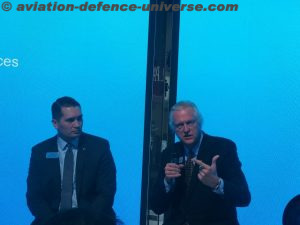 “We will collaborate with entities worldwide that possess abilities that frequently surpass our own,” Sjogren declared. “In its maintenance, repair, and overhaul shop, ST performs outstanding work. We have the chance to collaborate with them on their areas of expertise and our areas of expertise, which include data analytics, large-scale spares acquisition, and engineering. “When you combine that with ST’s considerable depth in terms of maintenance, modifications, and component repair, that allows us to work with them to provide a comprehensive solution where we can drive readiness and even guarantee mission readiness to the customer for the customer.”
“We will collaborate with entities worldwide that possess abilities that frequently surpass our own,” Sjogren declared. “In its maintenance, repair, and overhaul shop, ST performs outstanding work. We have the chance to collaborate with them on their areas of expertise and our areas of expertise, which include data analytics, large-scale spares acquisition, and engineering. “When you combine that with ST’s considerable depth in terms of maintenance, modifications, and component repair, that allows us to work with them to provide a comprehensive solution where we can drive readiness and even guarantee mission readiness to the customer for the customer.”
In response to a question by ADU on susceptibility of such voluminous data to breach and cyber attacks Turbo reiterated that it was the responsibility of both the OEM and the user to ensure cyber security and there are systems and processes in place keeping this threat in mind, at all levels of functioning.
In August, Indonesia and Boeing signed a memorandum of understanding for the potential purchase of up to 24 F-15EX aircraft, subject to US government approval. In the event that the F-15EX sale is authorised, Sjogren pointed out that Boeing already has AH-64 Apache helicopters in Indonesia, “so the support that we’re already doing, both with our customer together with local industry, allows us to leverage that experience.”
 Among the major markets in the region where Boeing has a significant presence are Singapore, Indonesia, Vietnam, Malaysia, Thailand, Brunei, and the Philippines. Southeast Asia headquarters of Boeing is located in Singapore, where the company conducts operations ranging from advanced research collaboration with the public and private sectors to commercial aircraft and defence procurement, services support, and training.
Among the major markets in the region where Boeing has a significant presence are Singapore, Indonesia, Vietnam, Malaysia, Thailand, Brunei, and the Philippines. Southeast Asia headquarters of Boeing is located in Singapore, where the company conducts operations ranging from advanced research collaboration with the public and private sectors to commercial aircraft and defence procurement, services support, and training.
According to Boeing’s Commercial Market Outlook (CMO), increased air travel will cause the fleet of aircraft in Southeast Asia to grow by 5% by 2040, creating a $700 billion demand for more than 4400 new aircraft. Most of the anticipated demand for commercial aviation services is expected to come from maintenance, repair, overhaul, and modification needs.
Collaboration is key to Boeing’s global success. As a vital link in Boeing’s global supply chain, the company’s current industrial partners in Southeast Asia are pushing the envelope to provide products and services of the highest calibre and productivity. Given the capabilities and opportunities that the aerospace and defence industries in Southeast Asia offer, including increased supply chain opportunities, Boeing has committed to a long-term strategy of increasing its investments in the region.
For some of Boeing’s most cutting-edge commercial and military aircraft, more than 50 regional suppliers with locations in Malaysia, Singapore, Indonesia, Vietnam, the Philippines, and Thailand are producing vital systems and parts, such as composites, landing gears, aerostructures, and electrical systems. Boeing works with industrial suppliers on lean manufacturing techniques, programme management, supplier management best practices, and specialised training as part of its mission to bring the best of Boeing to Southeast Asia.


































